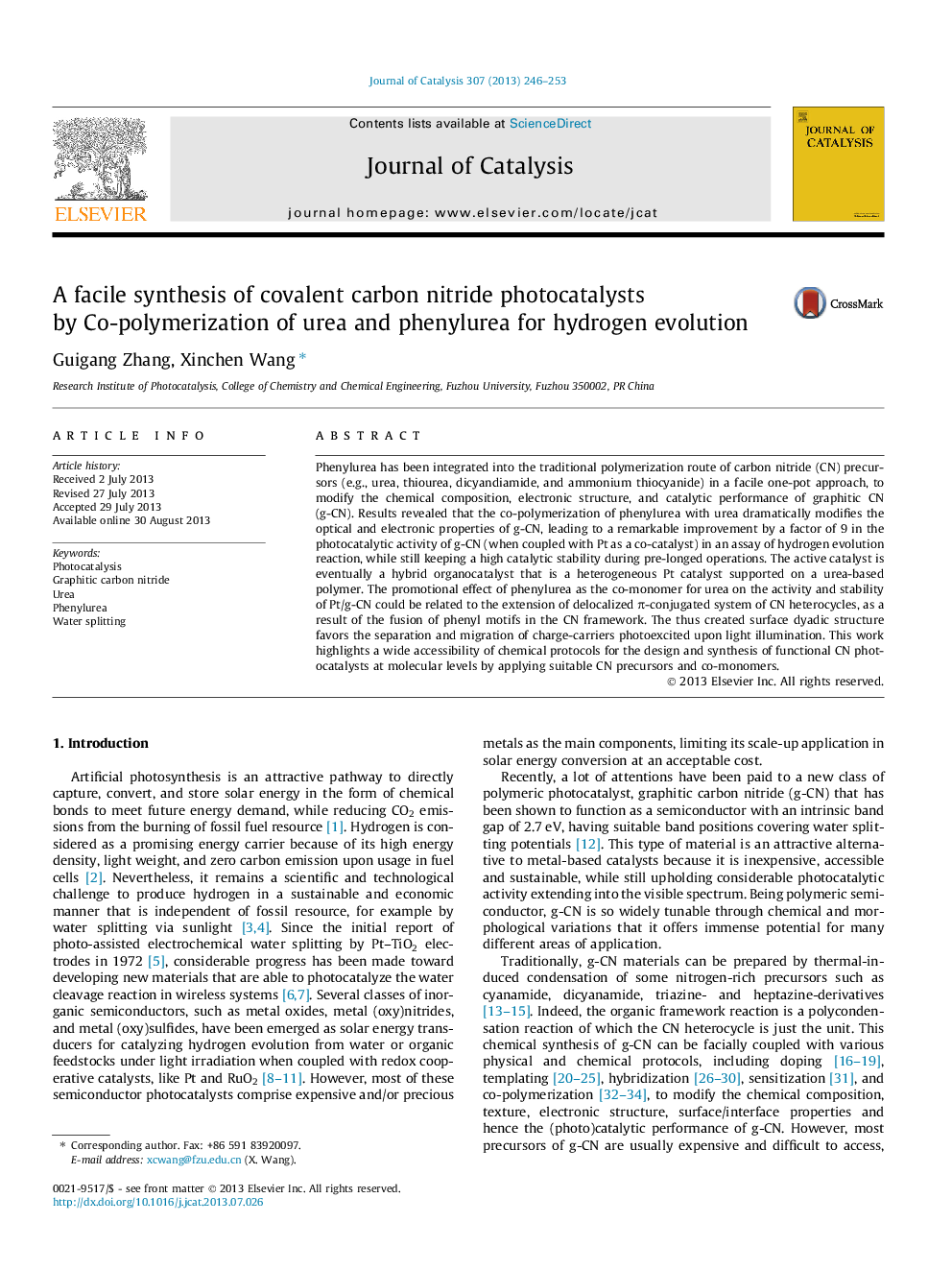| Article ID | Journal | Published Year | Pages | File Type |
|---|---|---|---|---|
| 61167 | Journal of Catalysis | 2013 | 8 Pages |
•Phenylurea is found to be a beneficial co-monomer of urea to synthesize reactive carbon nitride photocatalysts.•Co-polymerization with phenylurea can effectively extend the π-conjugated system of carbon nitride.•Both electronic and surface structures are modified by co-polymerization.•The fusion of phenyl group in conjugated carbon nitride greatly enhances the photocatalytic performance.
Phenylurea has been integrated into the traditional polymerization route of carbon nitride (CN) precursors (e.g., urea, thiourea, dicyandiamide, and ammonium thiocyanide) in a facile one-pot approach, to modify the chemical composition, electronic structure, and catalytic performance of graphitic CN (g-CN). Results revealed that the co-polymerization of phenylurea with urea dramatically modifies the optical and electronic properties of g-CN, leading to a remarkable improvement by a factor of 9 in the photocatalytic activity of g-CN (when coupled with Pt as a co-catalyst) in an assay of hydrogen evolution reaction, while still keeping a high catalytic stability during pre-longed operations. The active catalyst is eventually a hybrid organocatalyst that is a heterogeneous Pt catalyst supported on a urea-based polymer. The promotional effect of phenylurea as the co-monomer for urea on the activity and stability of Pt/g-CN could be related to the extension of delocalized π-conjugated system of CN heterocycles, as a result of the fusion of phenyl motifs in the CN framework. The thus created surface dyadic structure favors the separation and migration of charge-carriers photoexcited upon light illumination. This work highlights a wide accessibility of chemical protocols for the design and synthesis of functional CN photocatalysts at molecular levels by applying suitable CN precursors and co-monomers.
Graphical abstractCo-polymerization with phenylurea can effectively extend the conjugated system of graphitic carbon nitride to optimize its physicochemical properties for solar hydrogen evolution.Figure optionsDownload full-size imageDownload high-quality image (43 K)Download as PowerPoint slide
